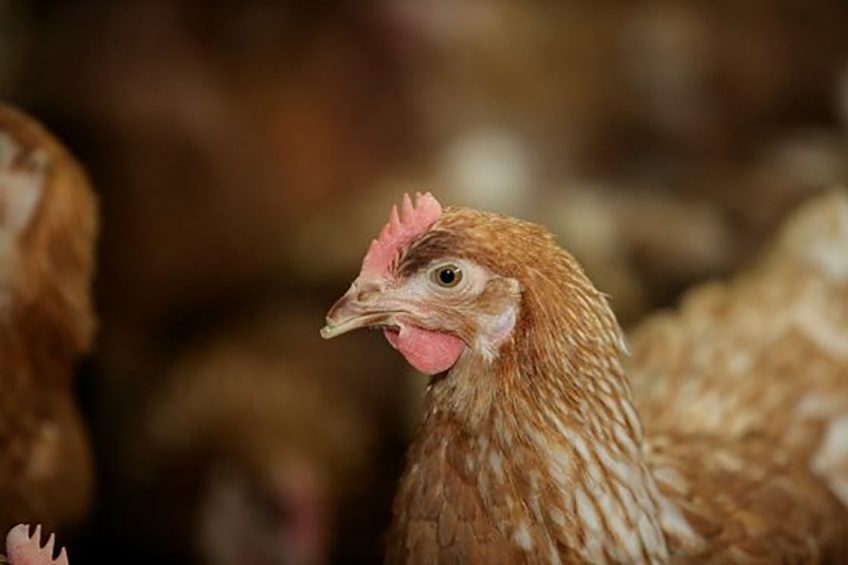Insect meal: Good for bird and eggs

The animal feed sector is increasingly using alternative protein sources. In poultry, the use of insect meal to replace (part of the) soy in the diet looks promising. A few recent studies are presented here.
Insects, specifically black soldier fly larvae (BSFL), could be an ideal protein-rich alternative for soy, due to their high nutritional value and the low requirement for breeding space. BSFL are an excellent energy and protein source (37% to 65% protein) and it has been stated that their amino acid profile is more suitable for poultry (Barragan-Fonseca et al., 2017; Schiavone et al., 2017). However, BSFL contain chitin that can negatively affect protein digestibility and, therefore, can be detrimental to animal performance.
Effect on growth performance
Several studies have been undertaken to determine whether BSFL is suitable as poultry feed ingredient and as alternative to soy. Dabbou and colleagues (2018) conducted a longitudinal study with dietary BSFL meal inclusion on broiler chicken growth performance, blood parameters, and intestinal morphology. In the study, 256 male broiler chickens were fed with four different inclusions of partially defatted BSFL meal from day 1 until day 35:
1. test diet with 0% BSFL meal inclusion,
2. with 5%,
3. with 10%, and
4. with 15% as substitute for soy (and corn gluten meal).
The diets were isonitrogenous and isoenergetic (same nitrogen and caloric content across diets). The results of this investigation suggest that inclusion of dietary BSFL meal up to 10% in male broiler chickens increase live weight and daily feed intake, however, only during the starter period (day 1 until day 10). During this period, the growth and development of chicken was much faster than in the subsequent periods (growing period from day 10 until day 24, and finisher period from day 24 until day 35). The increased feed intake and live weight gain was attributed to the improved diet palatability. It has already been reported that chicken seem to prefer feed that includes BSFL meal. During the growing and finisher period, the feed conversion ratio and live weight of the 15% BSFL group were negatively affected compared to 5% and 10% inclusion groups. It was hypothesised that the chitin content in the 15% BSFL meal diet could have negatively affected protein digestibility (Dabbou et al., 2018). In contrast, another study found that live weight and carcass weight of broiler chicken fed with 16% defatted BSFL meal inclusion were higher than the weights of control chicken after 34 days (BSFL substituted for soy). Here it was suggested that the higher amount of crude protein was most probably the cause and the chitin content, which did not seem to impact protein digestibility (Altmann et al., 2018).

Broiler meat quality
Altmann and colleagues (2018) analysed the change of meat quality and sensory properties of breast fillet of broiler chicken packaged according to the current industrial packaging practices with highly oxygenated modified atmosphere packaging (HiOx MAP) over time. Breast fillets of broiler chicken that received defatted BSFL meal as replacement for 50% of the soy (total inclusion during starter period was 19.5% and during grower period 16%) seemed to have a more intense flavour when it was fresh compared to breast fillet of the control group (no dietary BSFL meal inclusion). The flavour intensity decreased 3 days after packaging and then again 7 days after packaging. The flavour intensity of breast fillet of the control group also decreased from 3 days after packaging, but, curiously, was found to be increased again after 7 days. No explanations for the continuously decreasing flavour intensity of breast fillet from the BSFL group were given. However, it was stated that less flavour intensity could be a selling point, as it is preferred by some consumers. Further analysis found more stable pH levels in breast fillet from the BSFL meal group from fresh until 7 days after packaging compared to breast fillet of the control group. It was hypothesised that BSFL inclusion could result in in longer shelf-life.
Effect on egg production
Dietary inclusion of defatted BSFL meal also impacts egg production. In an 8 week investigation in 108 individual 19 weeks old pullets (Shaver White) that were fed a standard corn–soybean meal diet, defatted BSFL meal was included as substitution for soybean at 5% and 7.5%. Here, corn was gradually increased with reduced soy content and increased BSFL content. However, the authors did not state the reason for these changes. This could have been done to meet the nutrient requirements for 19 weeks old pullets (according to Shaver White commercial management guidelines) and to create iso-caloric and iso-nitrogenous diets. Nevertheless, the results showed that defatted BSFL meal inclusion of 7.5% resulted in similar egg production, average egg weight, and egg quality parameters compared to the control diet (analysed at day 5 of weeks 22, 24, and 26). In contrast, 5% inclusion resulted in significant lower daily egg production. Egg weight and egg mass were also significantly lower than for eggs laid by control hens. The similar results between control and 7.5% BSFL inclusion group were attributed to the significantly increased feed intake of hens of the 7.5% BSFL inclusion group compared to the control and 5% BSFL inclusion group (Mwaniki et al., 2018). Mwaniki et al., 2018 showed that yolk colour, shell breaking strength, and shell thickness were significantly increased when BSFL were fed. The increase of these parameters could have been caused by increased calcium absorption and/or calcium metabolism in the gut of the hens.
Conclusion
Although results are partly inconsistent, it could be stated that dietary inclusion of defatted BSFL meal of 10% to 16% as soy replacement does not negatively affect the live weight and daily food intake of male broiler chicken, at least during the starter period. During the growing and finishing periods, lower levels have been recommended. The health status determined by blood marker analysis does not conclude detrimental effects of defatted BSFL (Dabbou et al., 2018; Altmann et al., 2018). For egg production, the dietary inclusion of 7.5% defatted BSFL meal as substitute for soy is reasonable and results into more uniform eggs with darker yolk that are more resistant and could result in less losses during the production and supply chain.
References are available on request.













